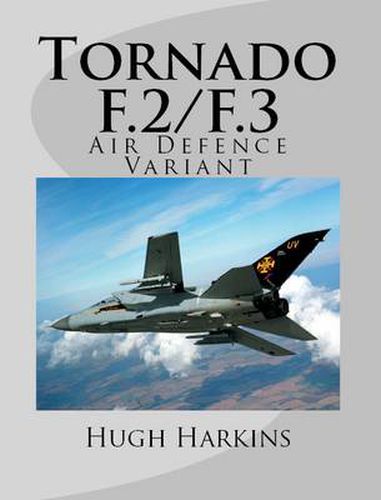Readings Newsletter
Become a Readings Member to make your shopping experience even easier.
Sign in or sign up for free!
You’re not far away from qualifying for FREE standard shipping within Australia
You’ve qualified for FREE standard shipping within Australia
The cart is loading…






This volume has been prepared using technical and performance information direct from the manufacturers and operators documents. The Panavia Tornado ADV was adopted for the RAF to fight the predicted air battle over the North and Icelandic Seas. This could have involved large formations of Soviet long-range bombers, strike aircraft and maritime patrol aircraft, some of which would have been capable of releasing stand-off cruise missiles at distances of around 300-miles from the UK’s shores. To meet this requirement the RAF did not require a small agile fighter, but rather a long-range interceptor, which would be capable of carrying a load of at least eight air-to-air missiles and be capable of detecting the enemy at long-ranges and intercepting them as far from the UK as possible. In the 1970’s, a number of off-the shelf options were looked at. A two-crew aircraft better served the demanding mission for the air defence of the UK and it was eventually decided to pursue a European solution by adopting a variant of the Tornado strike aircraft then in development. The resultant Tornado F MK.2 and F Mk.3 was ideally suited to the long-range interception mission it was designed for. However, from the early 1990’s, the aircraft was deployed on operations in a counter-air role; a mission for which it is less well suited, but could still accomplish more than competently despite ill informed reports to the contrary. The introduction of new weapons and systems introduced with the capability sustainment program introduced in the late 1990’s along with other upgrade programs allowed the aircraft to remain a potent air defence aircraft until its retirement from RAF service in 2011. The book covers the genesis of the Tornado program and the emergence of the ADV fighter variant. The Tornado ADV is described in detail, as is its operational service with the RAF, Saudi Arabia and Italy. A chapter looks at the upgrades to mission systems and weapons including air to surface weapons allowing the Tornado ADV to remain at the cutting edge of air defence technology well into the 21st century. All technical information comes direct from official documents for example the passage on page 17 The swept tail unit is of cantilever all-metal construction and comprises a single broad chord, swept twin spar vertical tail fin, with rudder mounting with low set all moving horizontal surfaces called tailerons. Has been reviewed by the manufacturer BAE Systems and passed as 100% factually correct.
$9.00 standard shipping within Australia
FREE standard shipping within Australia for orders over $100.00
Express & International shipping calculated at checkout
This volume has been prepared using technical and performance information direct from the manufacturers and operators documents. The Panavia Tornado ADV was adopted for the RAF to fight the predicted air battle over the North and Icelandic Seas. This could have involved large formations of Soviet long-range bombers, strike aircraft and maritime patrol aircraft, some of which would have been capable of releasing stand-off cruise missiles at distances of around 300-miles from the UK’s shores. To meet this requirement the RAF did not require a small agile fighter, but rather a long-range interceptor, which would be capable of carrying a load of at least eight air-to-air missiles and be capable of detecting the enemy at long-ranges and intercepting them as far from the UK as possible. In the 1970’s, a number of off-the shelf options were looked at. A two-crew aircraft better served the demanding mission for the air defence of the UK and it was eventually decided to pursue a European solution by adopting a variant of the Tornado strike aircraft then in development. The resultant Tornado F MK.2 and F Mk.3 was ideally suited to the long-range interception mission it was designed for. However, from the early 1990’s, the aircraft was deployed on operations in a counter-air role; a mission for which it is less well suited, but could still accomplish more than competently despite ill informed reports to the contrary. The introduction of new weapons and systems introduced with the capability sustainment program introduced in the late 1990’s along with other upgrade programs allowed the aircraft to remain a potent air defence aircraft until its retirement from RAF service in 2011. The book covers the genesis of the Tornado program and the emergence of the ADV fighter variant. The Tornado ADV is described in detail, as is its operational service with the RAF, Saudi Arabia and Italy. A chapter looks at the upgrades to mission systems and weapons including air to surface weapons allowing the Tornado ADV to remain at the cutting edge of air defence technology well into the 21st century. All technical information comes direct from official documents for example the passage on page 17 The swept tail unit is of cantilever all-metal construction and comprises a single broad chord, swept twin spar vertical tail fin, with rudder mounting with low set all moving horizontal surfaces called tailerons. Has been reviewed by the manufacturer BAE Systems and passed as 100% factually correct.